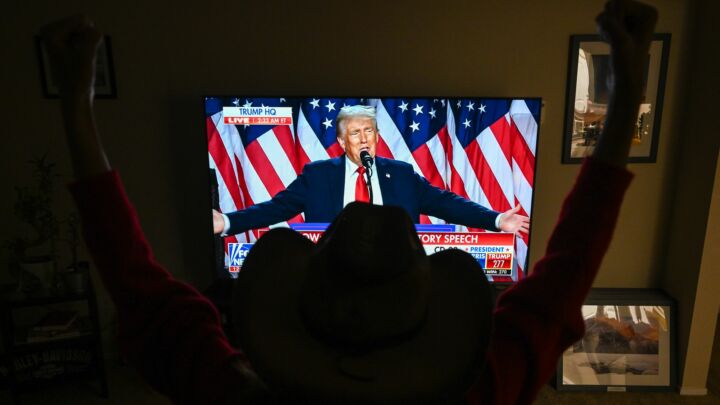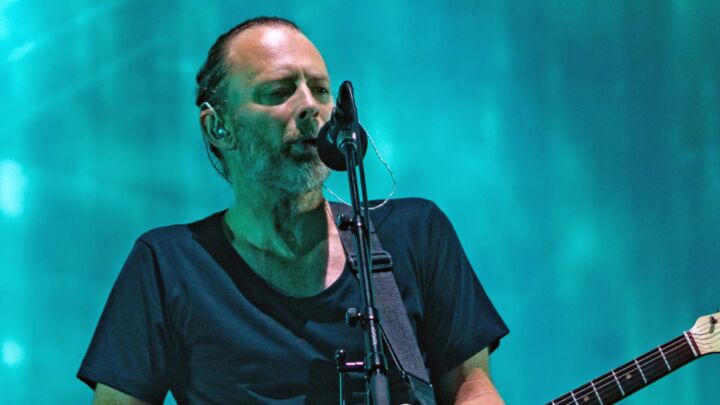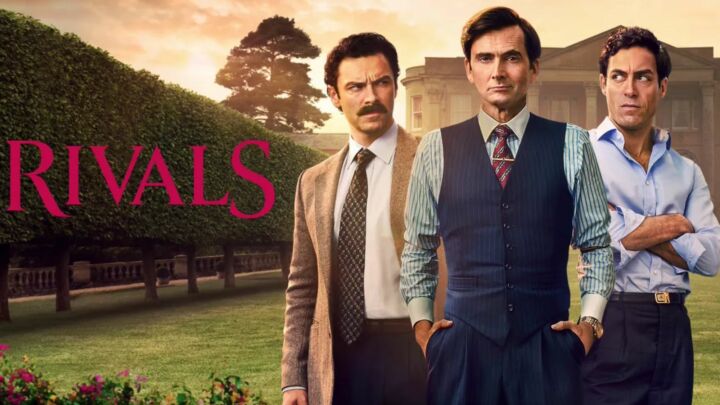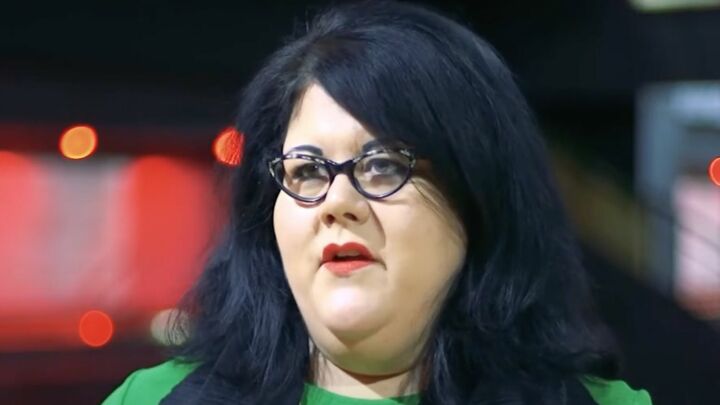The strange rise of ‘queer’ chick lit
The huge popularity of the Heartstopper graphic novels speaks to our sexless age.

Want to read spiked ad-free? Become a spiked supporter.
Passing a local church in Hove recently, I was pleasantly surprised to see a queue so long that it snaked all around the block into the next street. Until I realised the queue was pointing the wrong way. The back of it was at the door of St John the Baptist’s Church, but the front of it was at the Book Nook children’s bookshop.
I had seen this happen before, when David Walliams rocked up in 2018 to sign one of his books at the aforementioned nook. I actually thought about nipping in myself until I saw the size of the queue. Before he was unveiled as an ocean-going rotter in 2022, I had a bit of a crush on him. His appeal was that, while he appeared to be a homosexual, he was in fact a rampant heterosexual who had been married to the gorgeous model, Lara Stone.
This was nothing new, of course. Sex-mad English celebs have always played on the weakness of women and girls for men who seem fey and gay and harmless – from Marc Bolan of T Rex, a wolf in flamingo’s clothing, to Brett Anderson of Suede, who memorably called himself ‘a bisexual man who’d never had a homosexual experience’. He was a very early precursor to those now multifarious straight dingbats who identify as ‘queer’, despite being married to someone of the opposite sex.
This queue, though, was for the writer Alice Oseman. Still only 29, she has published six stand-alone novels since she secured her first publishing deal at the age of 17. She is most famous for Heartstopper, which she originally wrote and illustrated as a webcomic. It has since been published as multiple graphic novels and adapted into an award-winning Netflix series.
Heartstopper tells the story of Nick and Charlie, who meet as teenagers and fall in love. The supporting cast is variously transgender, asexual, lesbian, ‘demisexual’, arc-sexual, closeted and a border collie. There are some token straights, including homophobes, bullies and a pug.
Not everyone is a fan. In 2021, the Turkish government decided that ‘some elements in the books might have harmful effects on the morality of those aged below 18’, concluding that copies should only be sold inside sealed envelopes bearing the message ‘harmful for children’. Last year, the books were pulled from American school library shelves, from Oregon to Florida. A Hungarian bookstore was once fined for displaying them without modest overcoats.
But a few killjoys aside, Heartstopper is immensely popular, selling more than eight million copies in more than 37 languages and becoming the UK’s fastest-selling graphic novel ever. It sells to all sorts of people, and not just the young adults it was officially aimed at. ‘We could not be prouder to publish the Heartstopper series’, says Hilary Murray Hill, chief executive of Hachette Children’s Group. ‘Heartstopper is published for teenagers but seems to have a huge appeal for older readers too. It’s for everyone.’
Especially for adult women, perhaps, rather than the adolescent boys whose romance it covers? Certainly a great number of the critics who enjoyed it were female. I would estimate that around three-quarters of the queue for the Book Nook were young women rather than Hachette Children’s Group’s usual customers.
The question I’m interested in is this: how, exactly, do adult women ‘enjoy’ books about teenage boys getting it on? In a pure-hearted ‘ally’ kind of way? Or do they get excited by it? Is this just women doing what men have always done with representations of lesbians? Or is it in line with women retreating from romantic relationships, preferring to be spectators? (Obviously, I’ve got to be careful not to be hypocritical here. When my young-adult novel, Sugar Rush, was televised on Channel 4 some years back, I imagine a lot of the people watching the story about Kim’s lesbian romance were dirty old men.)
I think that women may have progressed from crushing on real-life men who seem gay but aren’t (David Walliams and androgynous pop stars) to pashing on men who are actually gay, at least in their imaginations (the characters in books, films and TV shows about romances between men). You could see this way back in 2005 with Brokeback Mountain. The characters in the original short story – by a woman, Annie Proulx – aren’t described as looking like Heath Ledger and Jake Gyllenhaal. Similarly, Call Me by Your Name, All of Us Strangers, Saltburn, Fellow Travelers, the rebooted Interview with the Vampire and all those Pedro Almodóvar flicks feature gay desire between what can vulgarly be called ‘eye candy’ for female punters.
The concept of ‘shipping’ – online fanfiction which forces fictional characters or famous people into imaginary romances – has been around for some time, running the gamut from Captain Kirk and Mr Spock to Harry Styles and his former One Direction bandmates. Indeed, Harry Styles is the latest of the long line of English pop stars who is coy about his sexuality (what the kids call ‘queerbaiting’) because it drives girls wild. The audience for his film, My Policeman, was mostly young women who could finally see him mack on with a man in a way they could previously have only dreamt of.
Harmless? Maybe. But the fact that Japan is the country in which gay male sex is most fetishised by young women – Google ‘Yaoi’ and be prepared to be amazed – should tell us something. It’s old news that the younger generation all around the world are having far less sex than my mucky lot in our teenage heyday. But it’s in Japan that the actual end of sex seems on the cards, with the number of virgins between 18 and 39 increasing faster than the population. Maybe fetishising homosexuals of the opposite sex is a symptom of this sterility.
And don’t think it couldn’t happen here. A friend says that ‘at my daughter’s school, the girls are obsessed with Heartstopper, to the extent that many of them now identify as gay lads’. From here it’s a short step to a double-mastectomy and a frustrating sex life. There are numerous sad stories online about ‘transmen’ (what we used to call tomboys) who believe that they can trick gay men into sleeping with them only to fall at the final hurdle.
Maybe ‘asexuality’ is the final frontier, with the number of young people who ‘identify’ as such on the rise. My gay friend, Greg, says his problem with Heartstopper is that it is ‘so cynically trying to appeal to women and younger girls’. So it ends up sanitising ‘the reality of being gay to the point of obsolescence’, he tells me. ‘Apparently being gay has nothing to do with sex!’
It’s telling that Oseman herself identifies as both ‘asexual’ and ‘aromantic’. ‘The world is obsessed with sex and romance’, she once complained in a Guardian interview. ‘And if you don’t have that, you feel like you haven’t achieved something that’s really important.’
It’s always nice to see young women so sure about what they like so early in life. But what if the alternative is even worse than sex? A lifetime of watching the opposite sex doing it rather than getting stuck in oneself doesn’t seem especially exciting to me. So forgive me, but I won’t be joining that Book Nook queue any time soon.
Julie Burchill’s new play, Making Marilyn, co-authored with Daniel Raven, will be at Brighton Palace Pier in May. Get tickets here.

Matt Ridley and Brendan O’Neill – live and in conversation
Thursday 21 March – 7pm to 8pm GMT
This is a free event, exclusively for spiked supporters.
Picture by: YouTube.
Celebrate 25 years of spiked!
A media ecosystem dominated by a handful of billionaire owners, bad actors spreading disinformation online and the rich and powerful trying to stop us publishing stories. But we have you on our side. help to fund our journalism and those who choose All-access digital enjoy exclusive extras:
- Unlimited articles in our app and ad-free reading on all devices
- Exclusive newsletter and far fewer asks for support
- Full access to the Guardian Feast app
If you can, please support us on a monthly basis and make a big impact in support of open, independent journalism. Thank you.







Comments
Want to join the conversation?
Only spiked supporters and patrons, who donate regularly to us, can comment on our articles.